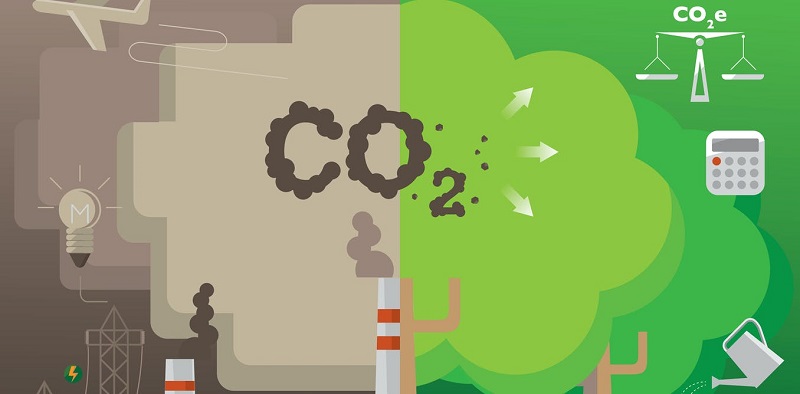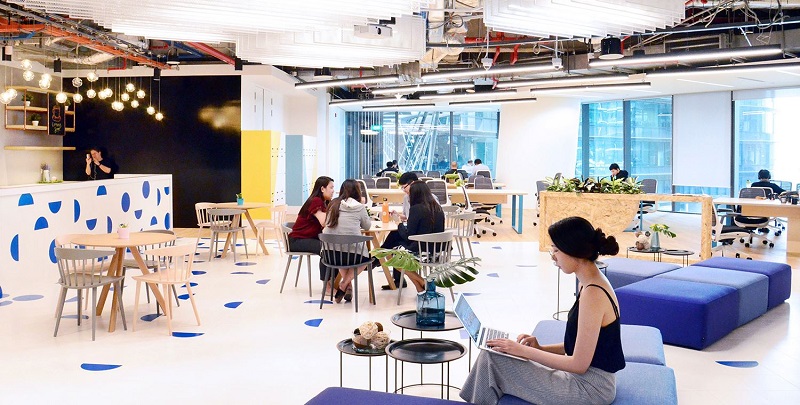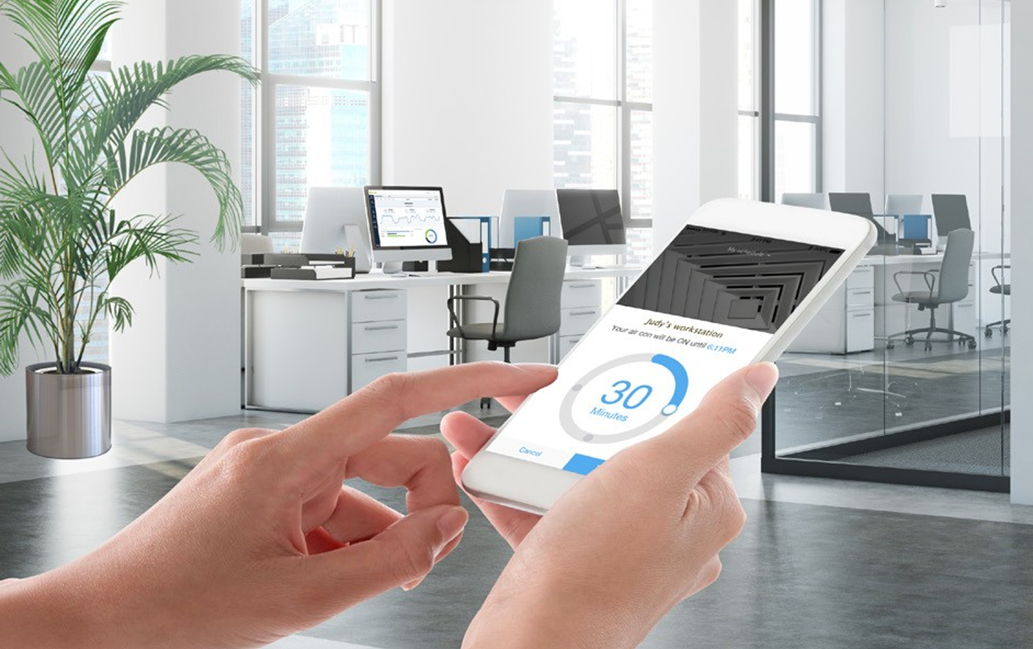HVAC On-demand / Wireless Lighting Control / Integration
A wave of net-zero commitments
Net-zero has surged onto the scene in the past few years, with the number of net-zero pledges roughly doubling since late 20191. The term itself refers to the equalization between the amount of greenhouse gas produced and removed from the atmosphere2. Companies can achieve this in two ways:
- Lowering emissions output directly by reducing energy use or generating renewable energy, or
- Buying carbon credits/offsets to support carbon removal efforts(such as a tree-planting project in Indonesia)

Net-zero is achieved by removing from the atmosphere the same amount of carbon emissions that is added (Photo: The Conversation)
In many senses, carbon offsets seem to be the simplest option – a straightforward purchase of your net-zero target. For example, Foxconn has stated that they will work to remove from the atmosphere the same amount of carbon dioxide it releases3. For an industrial company this can be achieved with a combination of on-site renewables and carbon offsets, with no need to touch upon fine-tuned manufacturing processes and specialized equipment.
However, there are downsides to this approach. The cost of carbon offsets is determined by the market, making them a risky option in the long term. And on-site renewables are not always feasible, especially for companies with a primarily urban and high-rise footprint.
For these companies, energy saving is an essential part of any net-zero plan (energy makes up the largest chunk of emissions output at 73.2%4). More specifically, this means changes to the ways offices are run – a significant chunk of emissions from energy use comes from the generation of electricity for commercial buildings5.
Energy consumption and hybrid working
To complicate matters, this wave of net-zero pledges comes as the entire concept of office spaces is being rethought. Extensive forced experiments with remote working have fundamentally changed employees’ relationship with the workplace and surveys show that elements of this new model are here to stay. According to a study conducted by JLL, 72% of workers want to continue working from home post-COVID, with the majority wishing to do so an average of two days a week6. Many employers are replacing their large, static offices with smaller, more dynamic offices – in some cases even flex workspaces.
As the role of the workplace transitions to new arrangements, employers need to consider the impact of these changes on their energy use. A smaller office footprint can reduce energy use (by offloading energy use onto employees at home, a separate and ongoing debate), but flexible use of any retained office space can lead to higher levels of energy waste due to cooling and lighting of unoccupied areas. Flexibility leads to uncertainty and greater challenges in managing workspaces, from space planning to aircon operations.

Employees working at JustCo’s Marina One West Tower Location in Singapore (Photo: Open Sourced Workplace)
Many companies will simply accept the windfall drop in energy use from cutting permanent office space. Poor performance may result from cooling and illuminating most, if not all, of the office space regardless of occupancy, but in most cases a 50% cut in office space can more than cancel out these inefficiencies. But others will embrace this transition as a unique opportunity to achieve even greater efficiencies, reducing their renewable energy and carbon offset burden (and therefore financial risk).
Tools to help navigate this new era
But how are these companies optimizing their energy consumption in such a new and dynamic environment? One key step is to change the concept of lighting and aircon as services provided by default. Just as the office desk has transitioned from a default home for the workday to an on-demand service, so too must lighting and aircon transition to an “on-demand” model.
One way to implement this on-demand model is through software like En-trak Smart Office, which allows companies to link aircon and lighting operations with occupant activity, so that energy is never wasted on unoccupied areas. Individual employees can “check-in” to a hotdesk using a desk booking system and the lighting and aircon for that area will be activated automatically for the duration of the booking. This ensures a comfortable work environment without the need for full-office cooling throughout a 9-10 hour workday.

Even fixed desks can be optimized. En-trak Smart Office integrates lighting/aircon operations with access control, activating desired settings in your working area as soon as you enter the building and returning to a standby mode when you leave.
As the workplace changes to a more flexible, on-demand model, companies are faced with a unique opportunity to make significant reductions in energy-related emissions by retrofitting their office spaces with smart technology. Seizing this opportunity will make net-zero a less risky and less costly proposition, ultimately resulting in net benefits for the environment.
1Navigating the nuances of net-zero targets | NewClimate Institute, 22 Oct 2020
2What is net zero? | National Grid Group, 27 May 2020
3Apple’s Supplier Foxconn Targets Net-Zero Emissions by 2050 | MarketScreener, 10 Nov 2020
4Emissions by sector | Our World in Data, 11 May 2020
54Charts Explain Greenhouse Gas Emissions by Countries and Sectors | World Resources Institute, 06 Feb 2020
6Global workforce expectations are shifting due to COVID-19 | JLL Hong Kong, 17 Nov 2020
To learn more about any of our smart office solutions, email us at info@en-trak.com. In the meantime, find more information about our solutions & technologies below.
Our Smart Energy PropTech Solutions
1. Tenant Experience Platform
2. Smart Connected Office
3. Energy of Schools
Technologies
1. HVAC On-demand
2. Wireless Lighting
3. Real-time Energy
4. Integrations